
How are Energy Choices Related to Climate Change?
Climate change is one of the most significant and complex challenges of our time as it involves a combination of natural environmental perturbations and anthropogenic contributions. Unless the whole world ensures a substantial change in our way of life towards sustainability, it will continue to result in rising global temperatures and large-scale shifts in weather patterns.
The rapid changes in global surface and seawater temperatures are primarily driven by the increased concentration of greenhouse gases in the atmosphere, especially carbon dioxide (CO2). This rise in greenhouse gases is largely attributed to the combustion of fossil fuels, which releases significant amounts of CO2 and other greenhouse gases into the atmosphere. Fossil fuels, which account for approximately 80% of global energy demand, are a non-renewable resource, contributing substantially to anthropogenic greenhouse gas emissions. The industrial sector alone is responsible for 68% of these emissions, underscoring the critical role of industrial activities in driving climate change. To mitigate the anthropogenic impact on climate change, it is imperative to optimize the energy sector and implement actionable strategies that facilitate the transition to alternative energy sources. This transition is crucial for fostering a more sustainable lifestyle and reducing the global carbon footprint.
Energy consumption, for many of us, occurs with little consideration of its environmental consequences. However, the impact of energy use is measurable through carbon footprints, which quantify the amount of CO2 and other greenhouse gases emitted as a result of fossil fuel consumption. The rise in energy costs exacerbates the financial burden on individuals and enterprises, further highlighting the need for more efficient and sustainable energy practices. To address these challenges, several strategies can be employed to reduce carbon footprints and promote sustainable energy consumption. These include increasing energy efficiency, adopting renewable energy sources, and implementing policies that encourage sustainable practices across various sectors. For instance, energy efficiency improvements in buildings, transportation, and industry can significantly reduce energy demand and associated emissions. The adoption of renewable energy technologies, such as solar, wind, and hydropower, offers a viable alternative to fossil fuels, providing clean and sustainable energy.
Some governments are implementing regulations and incentives to promote energy efficiency and the adoption of renewable energy, such as carbon pricing mechanisms, carbon taxes, and cap-and-trade systems, to encourage businesses and individuals to reduce their carbon footprints. However, public awareness and education are also essential in fostering a culture of sustainability, especially when it comes to understanding the environmental impacts of their energy consumption and helping them make informed choices that contribute to reducing greenhouse gas emissions. Educational campaigns and outreach programs can empower communities to adopt sustainable practices and support policy initiatives aimed at combating climate change. By optimizing energy consumption, promoting renewable energy, and implementing supportive policies, we can mitigate the adverse impacts of climate change and pave the way for a more sustainable future. If you are keen on taking this journey towards sustainability and trying to improve the health of our planet, we provide some recommendations on how to start changing your energy use behaviour today.
Thinking of Green Energy?
Many renewable energy alternatives can be integrated into our lives, including hydro, wind, solar, geothermal, or nuclear power. However, these sources face challenges with accessibility and cost efficiency compared to fossil fuels. Around 17% of global CO2 emissions stem from residential energy consumption and of that, 40% is from heating, cooling, and lighting within those buildings [4,5]. Ishutov and Stasiuk (2024) conducted surveys with homeowners who had renovated their homes in the past 15 years.
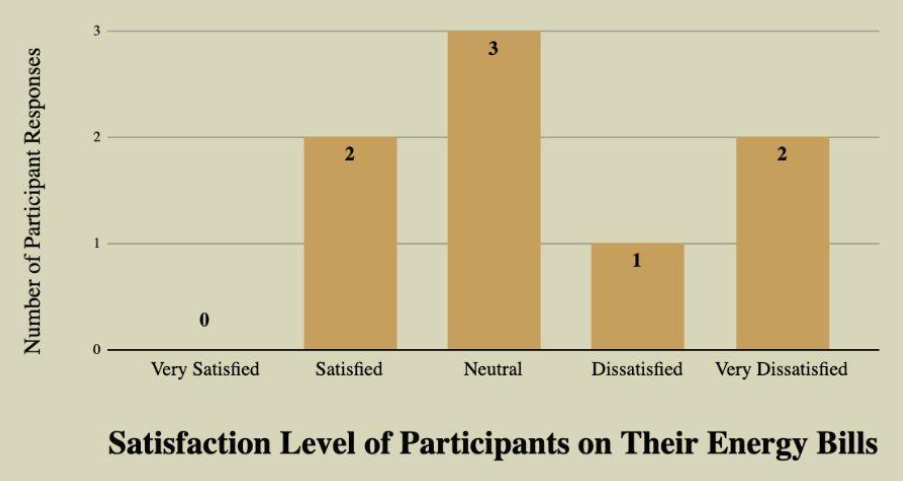
The survey results indicate a notable trend: these individuals typically have reduced energy consumption in kilowatt-hours (kWh). To enhance energy efficiency in residential buildings, several renovations can be undertaken. For example, installing new triple-pane windows or resealing doors can significantly increase a home’s R-value, (measures the flow of heat based on how thick a material is) thereby improving insulation and reducing energy loss. Other straightforward strategies to improve energy consumption habits include ensuring that lights and electronic devices are turned off when not in use. Figure 1 shows the results of a specific survey question about the level of satisfaction the participants had about their energy bills, finding that 75% of people were either unsatisfied or neutral, and only 25% were satisfied. This widespread dissatisfaction likely stems from high energy costs and inefficient energy use. By implementing the renovation strategies and adopting energy-efficient behaviors, homeowners can potentially lower their energy bills and improve their overall satisfaction with this aspect of their life.
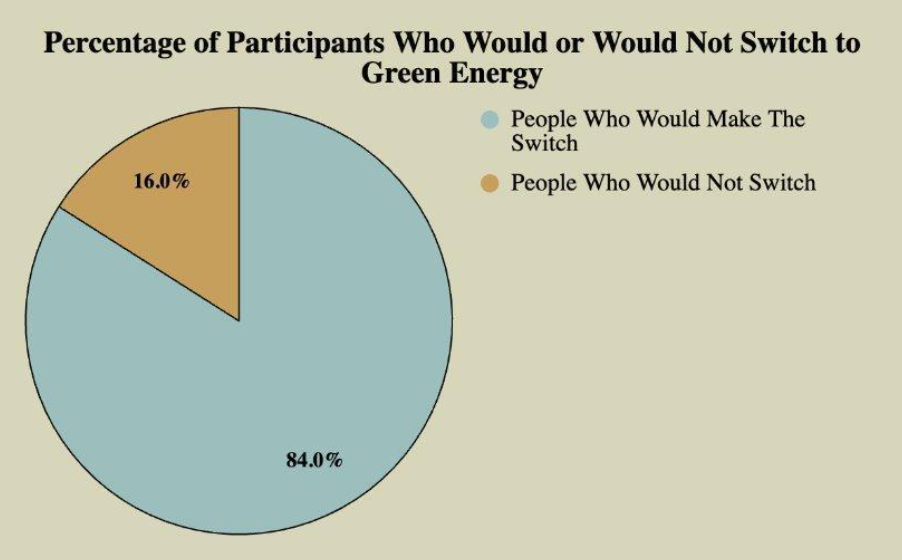
Why are individuals still reluctant to transition to green energy? Ishutov and Stasiuk (2024) reveal two main barriers: 1) the perceived high costs and 2) a lack of comprehensive information about sustainable energy practices. These factors significantly influence both those inclined to adopt green energy and those resistant to the change, as illustrated in Figure 2. The issue of cost is particularly prominent, as many individuals express a strong desire to switch to green energy but feel deterred by the prohibitive initial expenses.
Transitioning to renewable energy sources and enhancing residential energy efficiency are critical steps in reducing global CO2 emissions and mitigating climate change. While the installation of renewable energy technologies may currently face challenges related to accessibility and up-front cost, adopting energy-efficient practices and technologies in homes can significantly reduce energy consumption and associated emissions in the medium to long term. Through targeted renovations, behavioral changes, and the use of smart technologies, homeowners can achieve substantial energy savings, contributing to a more sustainable future.
Tools and Helpful Information
Sometimes we are forced to sacrifice environmentally friendly choices due to the constraints of our budgets. The Municipal Climate Change Action Centre created an infographic that provided an excellent visual of “low cost and no cost” technologies and tips to increase energy efficiency. Another element of this resource is the inclusion of opportunities to access funding support to deploy the technologies, therefore allowing room for all types of budgets. Energy calculators or carbon footprint calculators are a helpful and accessible resource for most people if you have access to a computer or smartphone. Energy calculators work by using your inputted information about energy-consuming habits and providing tips on how to reduce your consumption. Carbon footprint calculators look at all aspects of one’s life such as diet, travel, and habits to calculate carbon output in tonnes and help you identify where you can reduce your carbon output. There are free web and App-based calculators, with swrm’s own being one. You can find it on the App Store here. Some other free online energy calculators include the FortisBC or ENERGY STAR calculators. Following the results of an energy calculator, if someone lives in Edmonton or the surrounding areas, they may sign out a home energy tool kit. These are available at the Edmonton Public Library to test one’s home and discover where improvements can be made. These kits include a stopwatch, light meter, LED light bulb, imaging IR (infrared) thermometer, battery charger, rechargeable batteries, and lastly a kill-a-watt meter. The devices included will test things such as the energy demand of appliances, the amount of light in a room, or the temperature of specific areas or rooms to discover if cool air is entering or heat is escaping.
What Each of Us Can Do Now?
- Check Your Windows: Replacing old windows with triple-pane windows can significantly enhance a home’s insulation. Triple-pane windows offer higher thermal resistance, reducing heat loss during winter and heat gain during summer, thus lowering the energy required for heating and cooling. Another tip to incorporate is to close your blinds when it is hot, or when it is cool and the sun goes down. This will ensure the heat is trapped where you want it at the correct times. An easier temporary fix for those who cannot install blinds could be to hang a blanket over the windows. Windows seals also require monitoring in case of drafts, but there are low-cost window strips to achieve this in case they need refinishing.
- Check Your Door Seals: Resealing doors with weatherstripping can prevent drafts and air leaks, which are common sources of energy loss. Properly sealed doors maintain a more stable indoor temperature, contributing to energy savings. A low-cost alternative includes using towels or blankets underneath doors, or even on walls where drafts often occur.
- Inspect Your Insulation: Improving insulation in walls, attics, and basements can drastically reduce the amount of energy needed to maintain a comfortable indoor environment. High-quality insulation materials increase the overall R-value of the building envelope, leading to lower energy consumption. If you are renting, check with local legislation and ask your landlord or leasing agent to confirm that your property meets the criteria.
- Install Energy-Efficient Lighting: Transitioning to energy-efficient lighting, such as LED bulbs, can substantially reduce electricity use. LED bulbs consume less power and have a longer lifespan compared to traditional incandescent bulbs.
- Consider Smart Home Technologies: Implementing smart home technologies, such as programmable thermostats and automated lighting systems, can optimize energy use. These devices allow for precise control over heating, cooling, and lighting, reducing waste and enhancing efficiency.
- Efficient Appliance Use: Using appliances efficiently, such as running dishwashers and washing machines with full loads and selecting energy-saving settings, can lower energy consumption.
- Regular Maintenance: Regular maintenance of heating, ventilation, and air conditioning (HVAC) systems ensures they operate at peak efficiency. Cleaning or replacing filters, sealing ducts, and scheduling professional inspections can prevent energy loss and extend the lifespan of these systems.
Making the Switch
Are you passionate about your environmental impact, yet often find it expensive to accomplish?
As consumers, we have the freedom to choose what we invest our money into. Although green energy has a higher initial cost currently, if consumers shift their focus from current energy sources to alternatives, it will result in a drop in cost. If you’re looking for a more immediate choice to improve your energy bills, you can begin with the basic things such as ensuring to unplug small appliances when not in use and turn off lights whenever possible. If you are in a position to invest in your home, smart energy technology is a fantastic place to start. Considering which appliances you use is equally as important as switching them off or unplugging them when not in use. Looking for the ENERGY STAR logo is a great place to start, as this means the appliance will be more energy efficient than one without this accreditation. There are larger investments you can make such as swapping to solar energy by getting panels installed on your home or committing to energy-saving renovations to improve the overall efficiency of your home. But ultimately improving your energy efficiency and lowering your bills begins with the awareness of your daily habits and actions.
Looking Ahead
There is much to be done to conserve our planet and improve our environmental impact, but any current initiatives have not gone unnoticed. Although some changes feel smaller than others, any shift towards a more sustainable future is heading in the right direction. Alternative resources include hydrogen, solar, wind, geothermal, and hydropower, but there are currently obstacles to widespread deployment and uptake of these technologies, such as cost- this is certainly the priority for the current developments and policies. Thus, lowering our reliance on fossil fuels. Communities can come together to become more involved with local policies and become more active in their participation with local governments. This will begin to shift the ideas and priorities of the people, but also our governments and the policies they create. The whole planet is battling climate change, and our actions today determine the world we leave for future generations. We have the power to shape a sustainable future through decisive steps in energy conservation, renewable sources, and innovation. Let’s harness our collective determination to reduce carbon footprints, advocate for policy changes, and embrace technological advancements. Although some actions feel minute, if every single one of us decided to make a single shift, that could be 8 billion changes, multiplying to create something tremendous. Any progress is better than none. Together, we can forge a path towards a cleaner, healthier planet. The time for action is now—let’s seize it with unwavering resolve and determination!
Poster Presentation by Melissa Stasiuk and Dr Ishutov
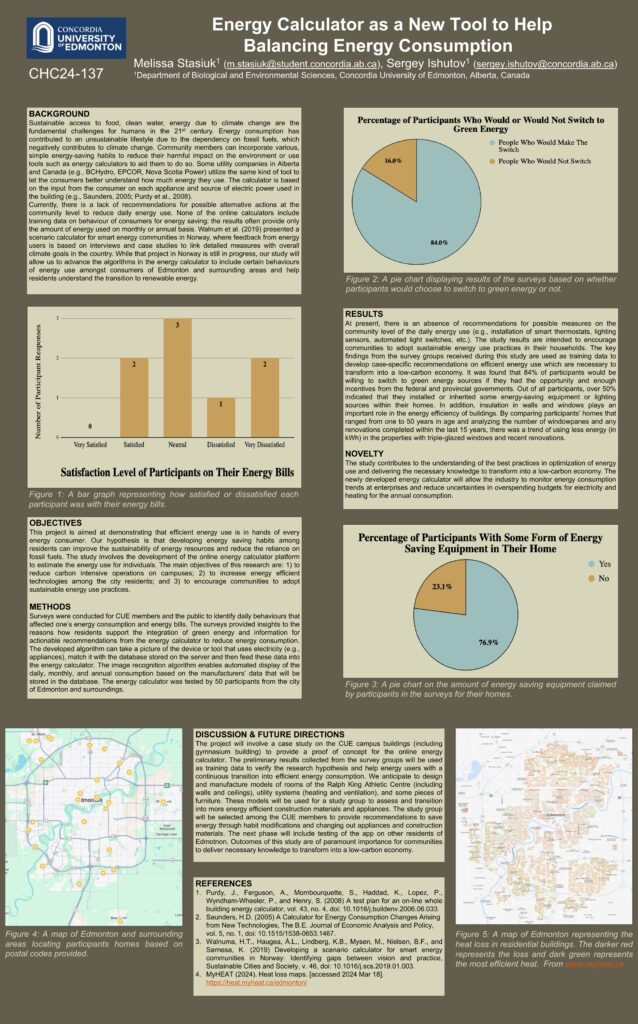
Infographic from the Minicipal Climate Change Action Centre
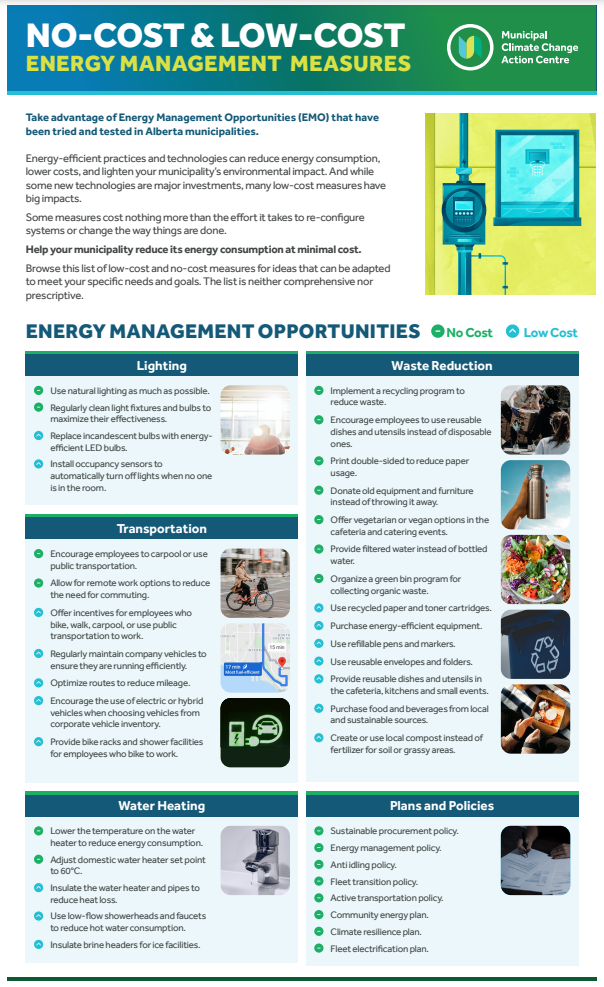
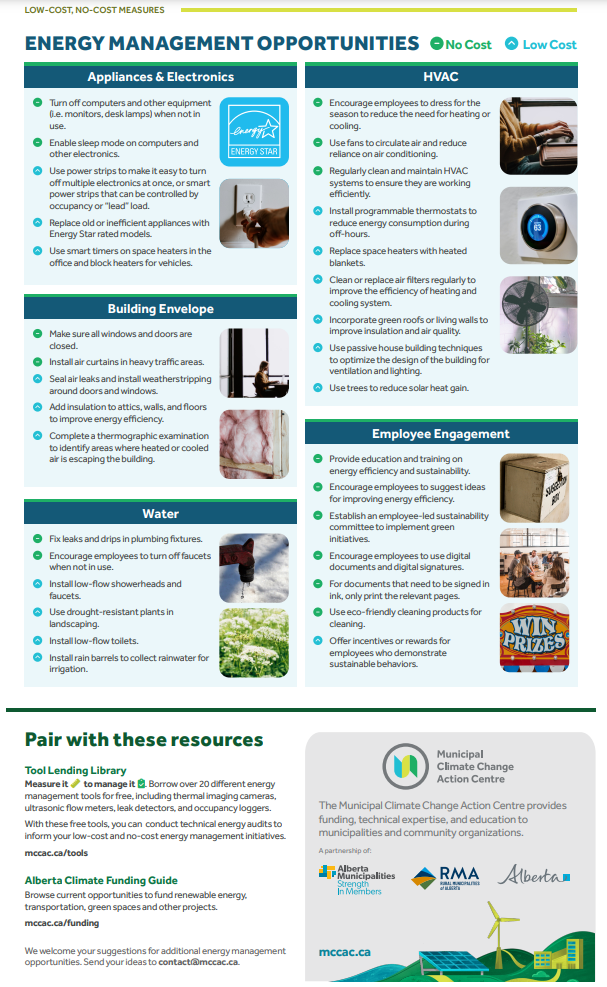
Author Bios
Dr. Sergey Ishutov is currently an Assistant Professor in Earth and Environmental Science at Concordia University of Edmonton. He has completed a postdoctoral fellowship at Reservoir Geomechanics Research Group at the University of Alberta. He earned a Ph.D. in geology at Iowa State University, with a specialization in 3D printing geological models. He has received MSc in geology from California State University Long Beach and BSc in petroleum geology from the University of Aberdeen in Scotland. Dr. Ishutov received multiple awards and research grants from American Association of Petroleum Geologists, Geological Society of America, and the Society for Petroleum Engineers as well as industry grants for research in 3D printing porous media. Having a work experience with ExxonMobil, Aramco, Shell, and Oxy, Dr. Ishutov is one of the world pioneers in integrating 3D printing for reproduction of porous rock models and publishing this research in geoscience journals. His active areas of research include energy efficiency and energy use benchmarking.
Melissa Stasiuk is an undergraduate student at Concordia University of Edmonton, working towards a Bachelor of Science majoring in Environmental Science with a minor in Sustainable Earth Resources and Geoscience. She has presented research on consumer behaviours and how it affects energy consumption at the Concordia Annual Research and Innovation Conference. Broadening this research, it was followed by studying and presenting a poster on the use of energy calculators alongside Dr. Sergey Ishutov at the Canadian Hydrogen Convention. Melissa has an elevated interest in learning about sustainability practices and furthering her knowledge of anything relevant to improving the state of the planet.
REFERENCES:
- Bilgen S. 2014. Structure and environmental impact of global energy consumption. Renewable and Sustainable Energy Reviews. [accessed 2024 Feb 28]; 38: 890-902.https://doi.org/10.1016/j.rser.2014.07.004
- N. Abas, A. Kalair, N. Khan. 2015. Review of fossil fuels and future energy technologies, Futures. [accessed 2024 March 3]; 69:31-49.https://doi.org/10.1016/j.futures.2015.03.003
- Krane J. 2017. Climate change and fossil fuel: An examination of risks for the energy industry and producer states. MRS Energy & Sustainability. [accessed 2024 April 3]; 4:2.https://doi.org/10.1557/mre.2017.3
- Omer AM. 2008. Energy, environment and sustainable development. Renewable and Sustainable Energy Reviews. [accessed 2024 Jan 17]; 12(9): 2265-2300.https://doi.org/10.1016/j.rser.2007.05.001
- St. Denis G,Parker P. 2009. Community energy planning in Canada: The role of renewable energy, Renewable and Sustainable Energy Reviews. [accessed 2024 Feb 28]; 13(8):2088-2095. https://doi.org/10.1016/j.rser.2008.09.030.
- Municipal Climate Change Action Centre. Infographic. [accessed 2024 April 3] https://mccac.ca/wp-content/uploads/No-cost-Low-cost-EMO-2023-003.pdf
- Fortis BC Energy Calculator. [accessed 2024 March 30] https://www.fortisbc.com/rebates-and-energy-savings/saving-energy-in-your-home/home-energy-calculator
- ENERGY STAR Calculator [accessed 2024 March 30] https://oee.nrcan.gc.ca/residential/business/energystar/procurement/calculator.cfm
- Home Test Kit [accessed 2024 April 3] https://www.edmonton.ca/programs_services/environmental/energy-toolkit
- ENERGY STAR Website. [accessed 2024 March 30] https://www.energystar.gov/about/how-energy-star-protects-environment/energy- efficiency
- Ishutov, S. Stasiuk, M. (2024). Energy Calculator as a New Tool to Help Balancing Energy Consumption, Canadian Hydrogen Convention, Edmonton, Canada, April 23-25, 2024.



